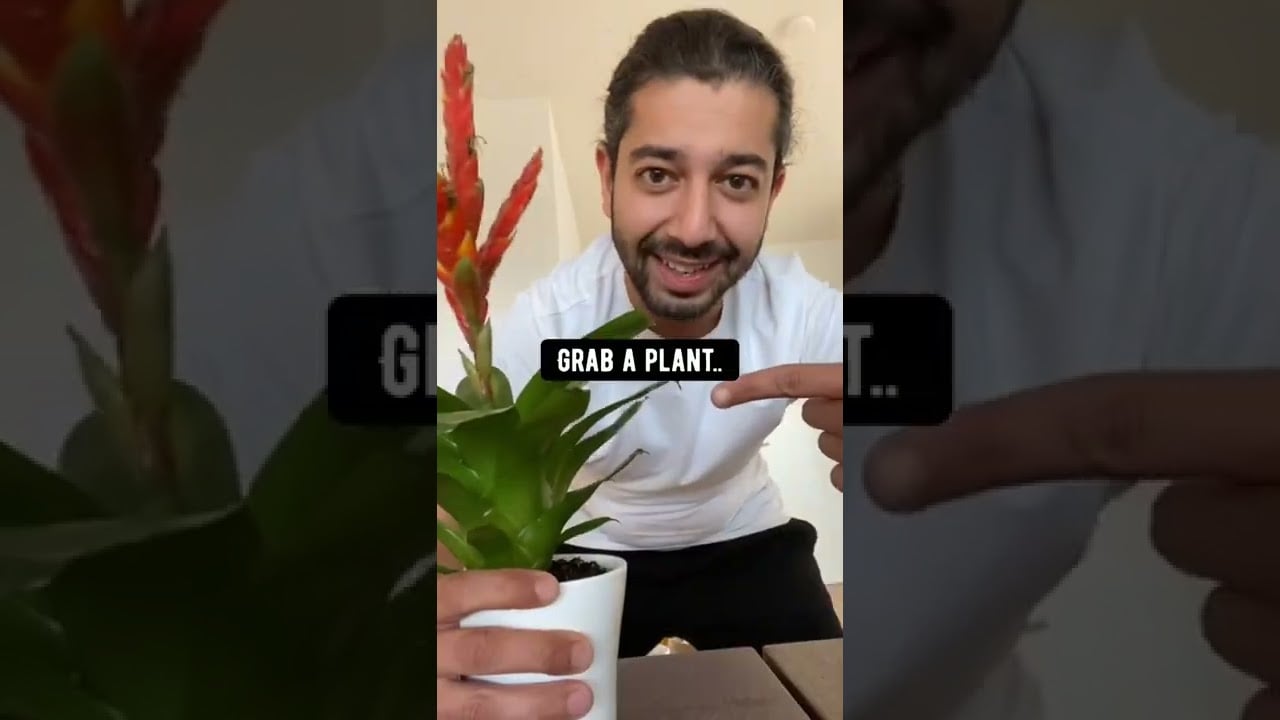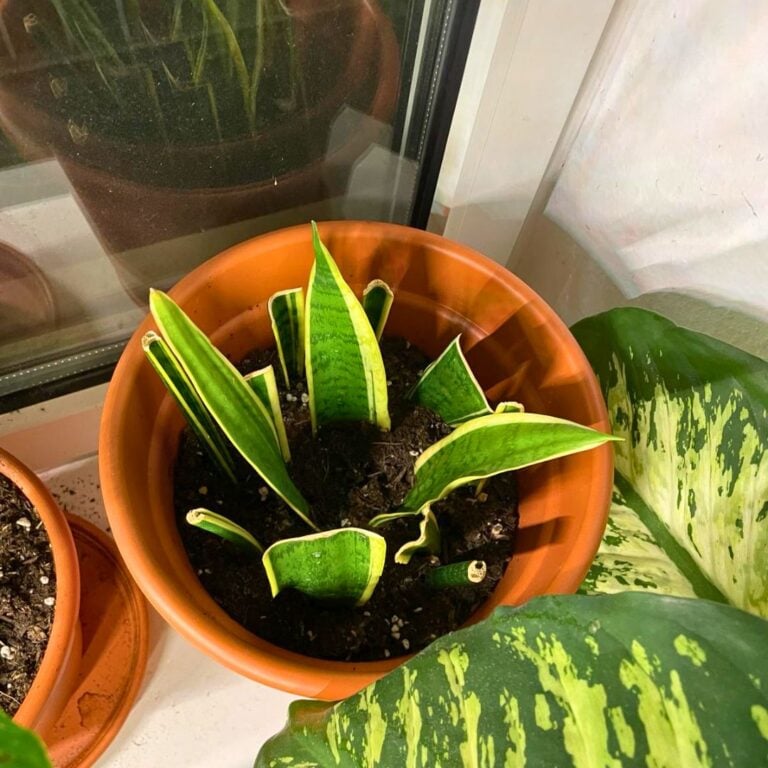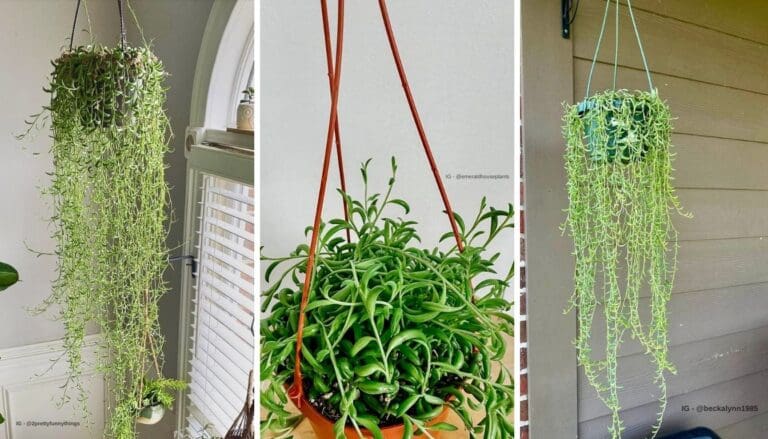7 Quick Summer Hacks Every Plant Lover Should Try
Summer’s honestly my favorite time to see my plants wake up and show off. But, let’s be real, the heat and blazing sun can make it a challenge to keep them healthy.
I’ve picked up a few summer hacks that keep my plants happy and green, even when it feels like an oven outside. If you’re looking to give your plants a little extra love this season, these might just help.
Please note: Simplify Plants is reader-supported. As an Amazon Associate, I earn from qualifying purchases made by our readers with no extra cost added to you all! Some links in the post are affiliate links and I get a commission from purchases made through links in the post.
1) Use shade cloths/sheer curtains to protect delicate plants from intense midday sun
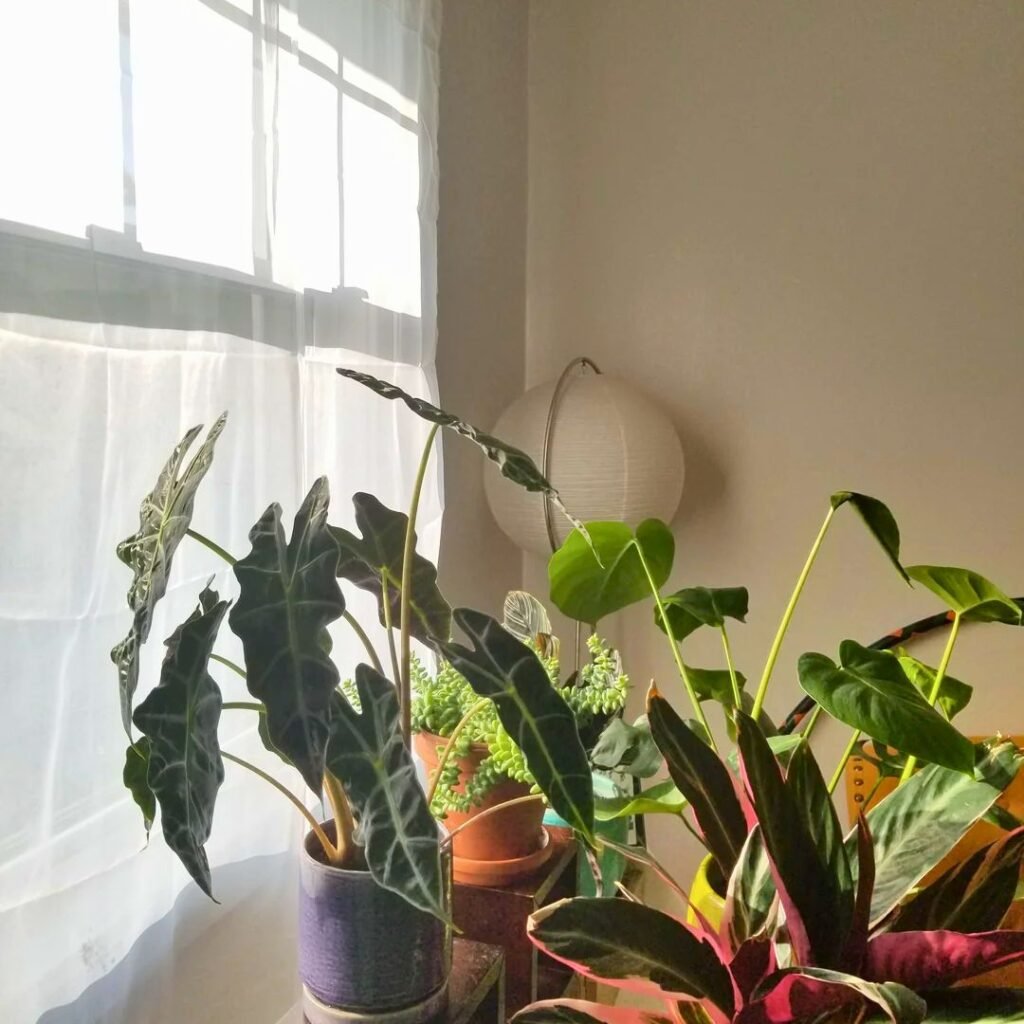
I always get nervous when the sun is blazing and my plants look a bit droopy. The heat just hits them hard, especially the younger ones.
That’s why I started using shade cloths for my more sensitive plants. It’s basically a light fabric that blocks some sunlight, but not all of it.
I set mine up during the hottest part of the day. It’s honestly saved my plants from sunburn and keeps the soil from turning into dust.
You can find shade cloths at garden centers or online, and I usually go for 30-50% shading. That seems to work for most things I grow.
I attach the cloth to poles or stakes so it sits above the plants, not right on them. Air still moves around, which is super important to stop mold or mildew.
For small spots or just a few pots, I’ve even used an old sheet in a pinch. It’s not fancy, but it does the job.
I make a habit of setting everything up in the morning and taking it down in the evening. That way, my plants still get some direct light.
Since I started doing this, I’ve seen way less wilting and my leaves look a lot healthier. It’s a really easy way to help my garden look good, even on those scorching days.
2) Create a DIY self-watering system with recycled bottles
I’m a big fan of hacks that help my plants and cut down on waste. One trick I love is turning old plastic bottles into a self-watering system.
First, I clean out a bottle and poke a few holes in the cap. Then I fill it with water, screw the cap back on, and stick it upside down in the soil near the roots.
The water drips out slowly, keeping the soil moist for days. It’s honestly a lifesaver if I’m away or just forgetful.
Big bottles are great for outdoor or larger pots, and the small ones work for my houseplants. I check every few days to see if they need a refill.
Using recycled bottles saves money and keeps plastic out of the trash. My plants have been way less thirsty since I started doing this.
It’s cheap, easy, and you probably have everything you need already. I like that I don’t have to buy anything fancy—just a quick DIY fix that actually works.
3) Apply a layer of mulch to retain soil moisture longer
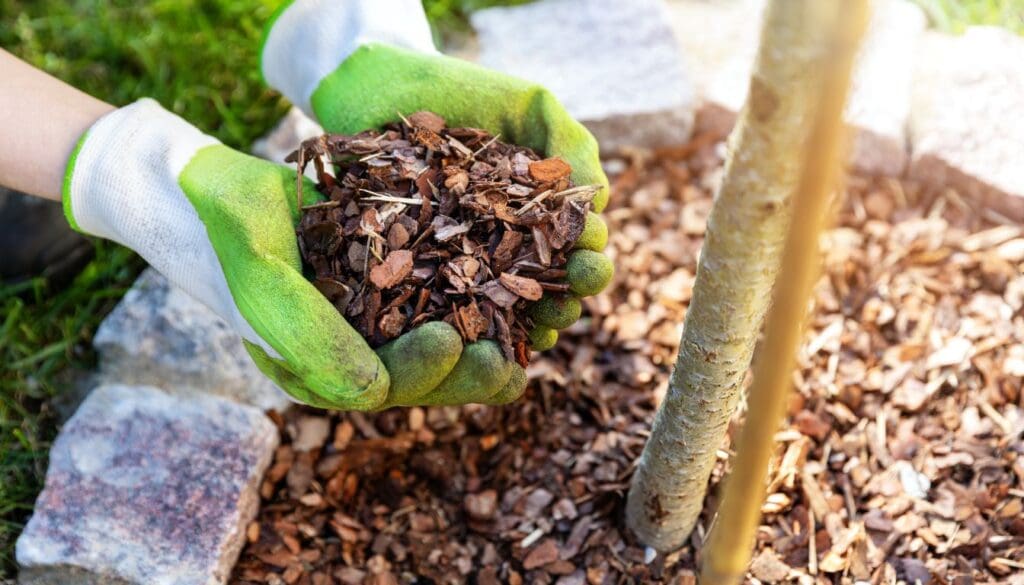
Every summer, I toss a layer of mulch on top of my soil. It’s such a simple thing, but it really helps my plants stay hydrated.
Mulch acts like a little shield, stopping the sun from sucking all the moisture out of the dirt. I usually grab wood chips, straw, or just dried leaves from the yard.
About 2-3 inches is plenty for most beds or pots. I’m careful not to pile it up against plant stems, though—nobody wants soggy, rotting plants.
Mulching saves me time because I don’t have to water as often. The soil underneath stays damp, even when it’s roasting out.
It also keeps weeds down, which is a win in my book. If the mulch starts looking thin, I just add more.
This trick works for outdoor beds and potted plants. Honestly, I tell everyone to try it. For me, mulching is a summer must.
4) Mist plants lightly in the early morning to cool leaves
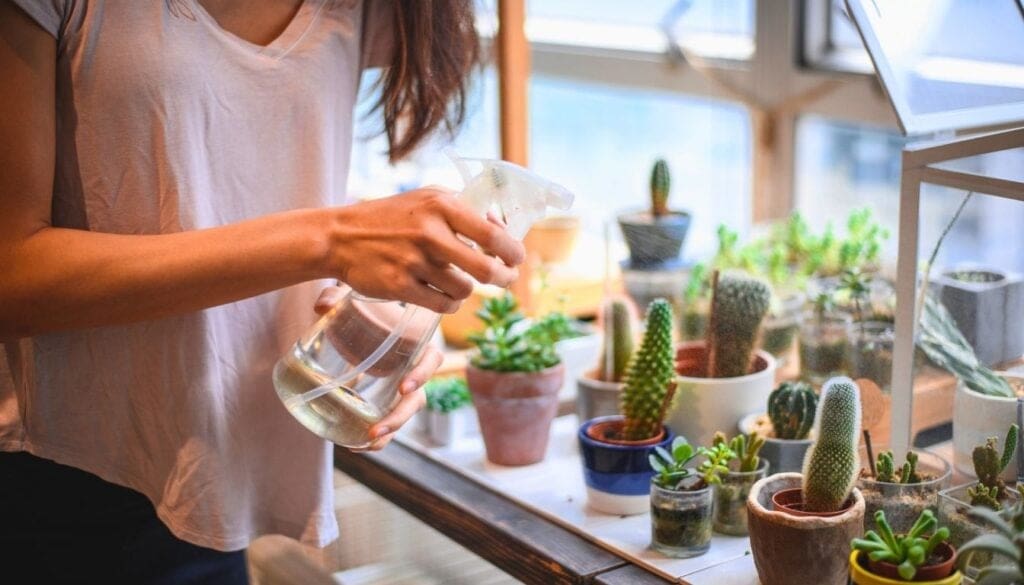
One of my favorite things to do is mist my plants on hot days. A quick spritz in the early morning cools off their leaves.
I use a spray bottle with clean water, just enough to make the leaves a little damp—not dripping.
Misting helps lower leaf temperature. It also bumps up the humidity, which my plants seem to love in the summer.
I skip misting in the middle of the day. Too much sun plus wet leaves can actually burn them, which is not what I want.
Thin or delicate leaves get extra attention from me. They dry out faster than the thick, waxy ones.
If it’s really hot, I might mist twice, but only early or late in the day. I try not to overdo it—too much water can mean mold or root issues.
Just a light mist is perfect. It’s quick, easy, and my plants always look happier afterward.
5) Move potted plants to shaded areas during heatwaves
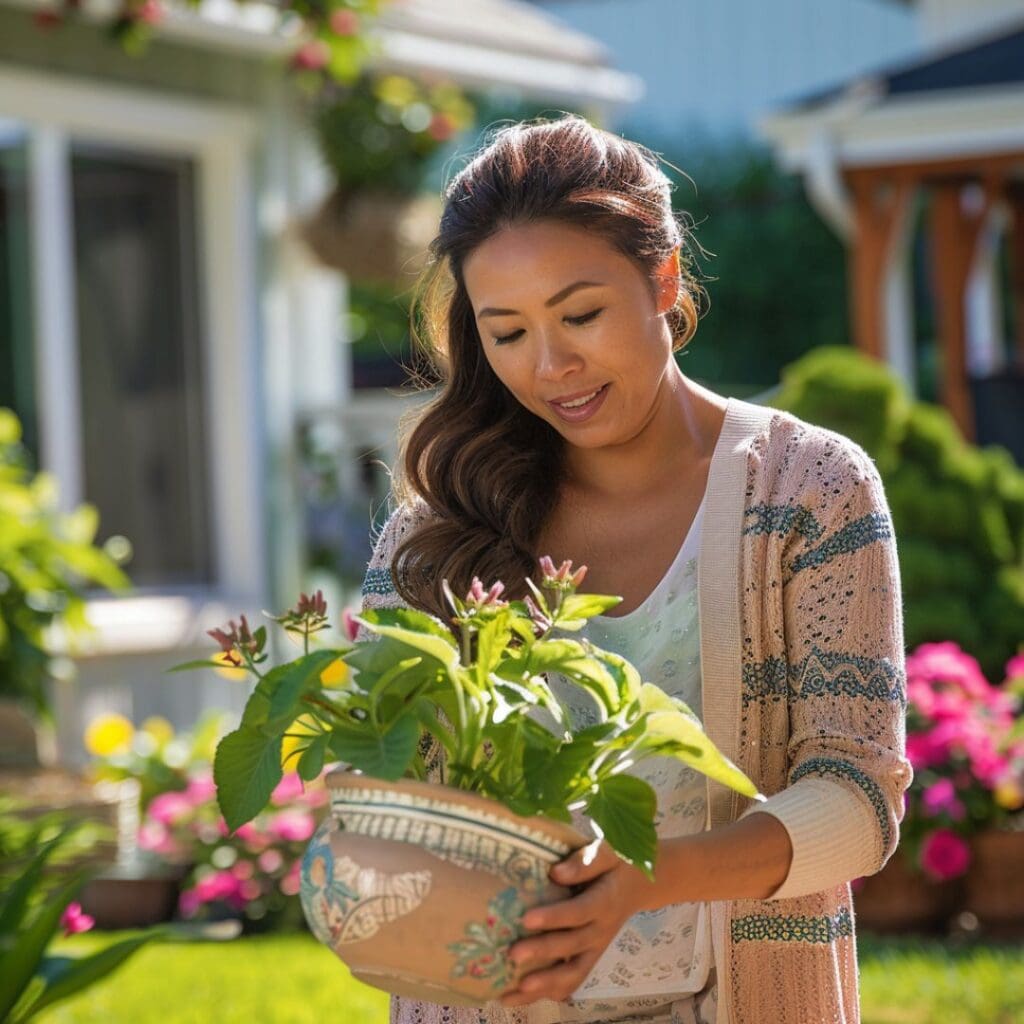
When it’s ridiculously hot, I move my potted plants into the shade. Too much sun can really stress them out and even burn the leaves.
Patios, porches, or even under a tree work as good shaded spots. They still get light, but not the harsh midday rays.
I use rolling carts for lightweight pots so I can move them around easily. It’s a little thing, but it makes a big difference.
Leaving pots in full sun during a heatwave dries out the soil fast and can hurt the roots. By moving them, I keep things cooler and more comfortable for my plants.
If I’ve got big pots, I’ll slide them next to taller plants or a wall that throws some shade. Even a bit of extra cover helps.
I check on my plants every day during a heatwave. If I see droopy leaves or dry soil, I move them again if I need to.
It’s a simple move, but honestly, it keeps my plants way happier in the heat.
6) Feed with seaweed-based fertilizer for summer stress relief

When my plants look a little tired from the heat, I reach for seaweed-based fertilizer. Seaweed gives them a gentle boost and helps them bounce back.
I mix the liquid into my watering can and try to feed every few weeks, especially when it’s hot.
Seaweed is packed with trace minerals that help roots grow and hold onto moisture. I swear my plants look greener and perkier after a seaweed feed.
It’s safe for basically any plant—houseplants, flowers, veggies, you name it. I just stick to the directions so I don’t overdo it.
I like that it doesn’t smell as strong as fish fertilizer. Plus, it’s natural and easy to use.
Even if my garden’s looking a little sad, seaweed seems to bring it back to life. It soaks in fast and gets right to the roots.
I always feed early in the morning or late in the day, so the plants don’t dry out too fast. A little extra water before and after helps spread the nutrients.
Seaweed fertilizer is one of my go-to summer tricks! It’s quick, simple, and my plants really seem to appreciate it.
7) Prune dead leaves to encourage new growth
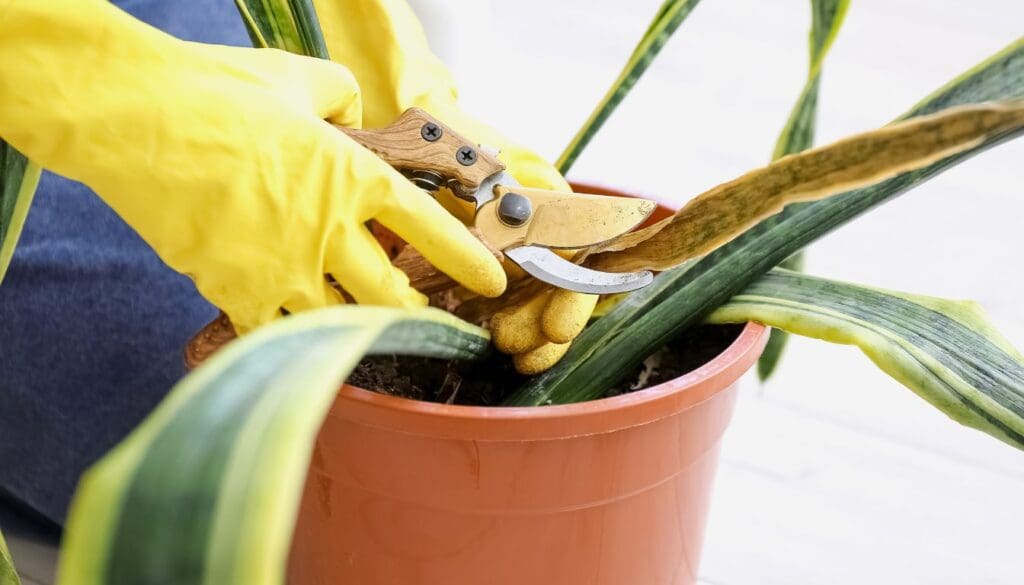
I make a habit of checking for dead or yellowing leaves every week in summer. When I spot them, I snip them off with clean scissors.
This keeps my plants looking good and helps them focus energy on new growth. I’ve noticed that new leaves pop up faster when I keep up with regular pruning.
I cut close to the base of the leaf, but not right up against the stem. That way, I don’t risk hurting the plant.
Pruning also helps keep bugs and disease away, so my plants stay strong all season.
I always wipe my scissors between plants to avoid spreading any germs. It’s a small step that’s made a real difference for my little plant family.
Now, pruning is part of my regular summer routine. It’s quick, easy, and my plants definitely grow better for it.
Making the Most of Summer Weather
When summer rolls in, I tweak my plant care routine. Paying attention to temperature and water makes a big difference for my plants.
Protecting Plants From Heat Waves
If a heat wave is coming, I move my potted plants to the shade. If I can’t move them, I’ll throw up an old sheet or even a big umbrella for some cover.
I water early in the morning so the soil can hold onto moisture. A layer of mulch—leaves or straw—keeps roots cooler and slows down drying.
I check pots and small gardens for dry soil a couple of times a day. If it’s hot and dry, I’ll add water.
Sometimes, I group pots together to make a little microclimate. They help each other stay moist longer.
Here’s my quick checklist:
- Move plants to shade
- Water in the morning
- Add mulch
- Group pots together
My plants look a lot greener and less wilted when I stick to these.
Using Rainwater Efficiently
Whenever it rains, I grab a few buckets or use a rain barrel to collect water. It’s free of all the chemicals in tap water and just feels better for my plants.
I put buckets under roof edges or drain spouts to catch as much as possible. Even a clean storage bin works if I don’t have a rain barrel.
Collected rainwater is great for indoor and outdoor plants. It saves money and seems to make them happier.
I label my rainwater buckets so no one uses them for something else. That way, my plant water stays clean and ready to go.
Rainwater is cooler and softer, so my plants get a nice drink even on the hottest days.
Eco-Friendly Summer Gardening Tips
I’m always looking for ways to make my garden a little greener and safer. Simple, eco-friendly habits help my plants, the soil, and even the critters that hang out in the yard.
Composting Smartly in Warm Months
When summer hits and the temps go up, compost piles really start to break down fast. I mix my pile often—just grabbing a fork and turning it over—because it helps air get in.
That keeps things from smelling funky and makes sure everything breaks down pretty evenly. I usually stick to lighter kitchen scraps like fruit peels, coffee grounds, and eggshells.
If I’ve got grass clippings or dry leaves, I’ll layer them in with the food waste. That way, the pile doesn’t end up too soggy or, you know, bone dry.
Watering matters, but I’m careful not to drown the pile. Just a quick splash if it looks dry—no need to soak it.
I keep a small covered bin in the kitchen for scraps, which helps keep flies away. Tossing in a handful of shredded newspaper cuts down on smells, too.
Eco-Safe Pest Management
I don’t mess with chemicals, even if I spot bugs munching on my plants. Instead, I look for natural fixes—stuff that won’t mess up my garden or the critters that visit.
Hand-picking beetles and caterpillars sounds old-school, but honestly, it works. I’ll also grab a spray bottle and mix up some soapy water—just a little mild soap in water—and spritz it on aphids or other small bugs.
Ladybugs and lacewings? Those are my garden MVPs. I try to attract them with flowers like marigolds or dill since they eat pests for me.
If something really needs extra help, I’ll use lightweight row covers. They keep bugs off but still let the sun and rain do their thing.
All of this helps keep my plants healthy without hurting bees, pets, or any wildlife nearby.
Frequently Asked Questions
I care a lot about my plants, especially when summer heat rolls in. Keeping them happy means figuring out how to hydrate, shade, feed, and protect them—sometimes it’s a bit of trial and error.
How can I keep my plants hydrated while on vacation?
I make a quick DIY self-watering system by poking holes in old plastic bottles, filling them with water, and sticking them in the soil. A thick layer of mulch around the plants helps the soil hold onto moisture longer, too.
What are some natural pest repellents safe for my garden?
I’ll spray a mix of water and mild dish soap on the leaves, or scatter crushed eggshells around the base to keep pests away. If I need something extra, planting marigolds nearby usually helps since they naturally drive off some bugs.
What’s the best way to protect plants from a heatwave?
I use shade cloths or move my potted plants into shadier spots when the sun’s blazing. Giving the leaves a gentle mist in the early morning can help cool things off without risking sunburn.
Can you suggest any DIY nutrient mix for summer plant growth?
I’ll mix a tablespoon of Epsom salt in a gallon of water and use it once a month—plants seem to love the magnesium boost. Sometimes I save cooled water from boiling veggies and use that to water the garden for a little extra nutrition.
What are effective watering techniques during the hot weather?
I always water early in the morning so the roots get a good soak before the sun’s out in full force. I aim for the base of the plant, not the leaves, and I’ll water deeply a few times a week instead of a little every day—seems to work better that way.
How do I choose the right plants that can thrive in summer?
I usually go for plants labeled as drought-tolerant or ones that just seem to love soaking up the sun—succulents, zinnias, lavender, you know the type.
Native plants are honestly a safe bet since they already know how to handle the local summer heat. I always take a quick look to see which ones actually thrive where I live.
Recommended Garden Supplies
| Product Image | Our Recommended Gardening Supplies | Check Offers! |
|---|---|---|
Top Top
Top
Top
Top
Top
Top
Top
Top | rePotme Houseplant and Tropical Classic Potting Soil Mix | Check Offer On Amazon |
 Top
Top
Top
Top
Top
Top
Top
Top | Espoma Organic Indoor Plant Food | Check Offer On Amazon |
 Top
Top
Top
Top
Top
Top
Top
Top | GooingTop LED Grow Light 6000K Full Spectrum Clip Plant Growing Lamp | Check Offer On Amazon |
 Top
Top
Top
Top
Top
Top
Top
Top | Soil Moisture Meter | Check Offer On Amazon |
 Top
Top
Top
Top
Top
Top
Top
Top | Govee Hygrometer Thermometer, Bluetooth Enabled! | Check Offer On Amazon |
 Top
Top | LEVOIT Humidifiers for Large Room(Best For Plants) | Check Offer On Amazon |
 Top
Top
Top
Top
Top
Top
Top
Top | Upgraded DIY Automatic Drip Irrigation Kit, 15 Potted Houseplants Support | Check Offer On Amazon |
 Top
Top
Top
Top
Top
Top
Top
Top | Stainless Steel Heavy Duty Gardening Tool Set | Check Offer On Amazon |
 Top
Top
Top
Top
Top
Top
Top
Top | Bonide Insecticidal Soap | Check Offer On Amazon |
 Top
Top
Top
Top
Top
Top
Top
Top | Bonide 32 oz Spray Neem Oil for Organic Gardening | Check Offer On Amazon |
 Top
Top
Top
Top
Top
Top
Top
Top | Garden Safe Fungicide | Check Offer On Amazon |

